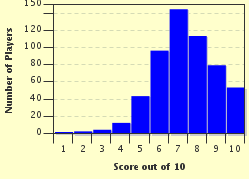Quiz Answer Key and Fun Facts
1. The leaves of this maple tree are yellow because of the presence of what class of chemicals in the leaves?
2. The red color in these leaves comes from the presence of anthocyanins. Aside from the difference in color, what is a significant difference between these chemicals and those that produce a yellow color (in leaves that change color in autumn)?
3. Part of what makes the fall foliage in places like New England famous is the contrast between the colors of the deciduous trees and the green of trees such as the one shown here. What generic term is given to trees such as the Eastern white pine pictured?
4. Some trees produce a variety of colors, possibly on the same tree. These leaves came from a single specimen of a tree in the genus Quercus. By what name do observers probably refer to the tree from which they came?
5. These maple leaves show a range of colors from yellow through orange to red, along with some that are still green. Could they all have been taken from a single tree at the same time?
6. The production of color is part of the process of abscission, or the dropping of leaves. After they have produced color, most leaves die and turn brown as they drop. Why do dead leaves look brown?
7. Foliage tourists know that some years produce more brilliant fall colors than others. What conditions lead to the most impressive displays of color in autumn?
8. Fall foliage can be found in some places where one might not expect to see it. This American sweetgum is located in Hawaii, where one might think the conditions are not conducive to brilliant displays of color. In what part of the state is it most likely to be located?
9. While deciduous trees in many temperate parts of the world change color in autumn, the color display in North America is often more impressive than is the case in other places. Which of these is NOT a contributory factor for this?
10. Sometimes the change of color associated with leaf drop in deciduous trees is not triggered by the onset of winter, but by which of these factors?
Source: Author
looney_tunes
This quiz was reviewed by FunTrivia editor
rossian before going online.
Any errors found in FunTrivia content are routinely corrected through our feedback system.

